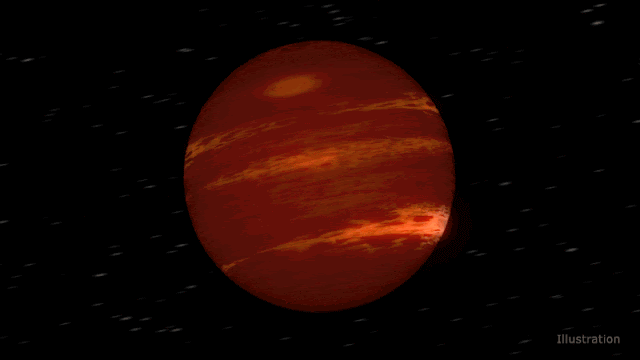This image of B2 0924+30 was obtained with LOFAR at 150 MHz. In this object, the analysis of the radio spectrum99 extended to low frequencies reveals that the activity ceased around 50 Myr ago. Image credit: A. Shulevski.
a, The LOFAR image at 150 MHz shows the amorphous morphology of the remnant radio source. b, This morphology is also confirmed by observations at higher frequencies from the Westerbork Synthesis Radio Telescope (WSRT). c,
The radio spectrum constructed from fluxes obtained at different
frequencies with various radio telescopes (as indicated) and shown with
their error bars (WENSS, Westerbork Northern Sky Survey; GB6, Green
Bank 6-cm). The best fit of the data is shown in blue. The radio
spectrum shows a very steep slope at high frequencies, which indicates
that the central source has turned off. However, at low frequencies the
spectrum (α ~ 0.74) is not much steeper than the original injection index. The overall shape of the spectrum is thought to be66 a source that has spent most of its life in a dying phase (t
off = 60 Myr versus t
on = 15 Myr). Figure adapted from ref. 100, ESO.
Evolution of the accretion rate (including turbulence, cooling, AGN
heating and rotation) as a fraction of the cooling rate. This
illustrates the changes in accretion rate (and therefore level of
activity) on short timescales. Figure reproduced from ref. 20, Oxford University Press
a, Ground-based optical image of IC 2497 (top), Hanny’s Voorwerp
(bottom in green), and a nearby companion galaxy (left). The ‘green’
emission of the Hanny’s Voorwerp is highly ionized gas. This image is a
composite of blue, visual and near-infrared light images taken with the
WIYN telescope. b, Schematic of the lifecycle of optical AGNs. Panel a credit: WIYN / William Keel / Anna Manning. Panel b reproduced from ref. 31, Oxford University Press.
The timescales over which galaxies form and evolve are outside the reach
of human life. Thus, astronomers need to use indirect methods to derive
the history of galaxies.
Important events happen during the life of a
galaxy and they can change the course of its evolution. In particular,
when the central supermassive black hole (SMBH) is active, it can
release huge amounts of energy which can affect the surrounding gas and
can impact the evolution of the entire galaxy. This effect has been
recognised as crucial for explaining why galaxies look the way they do.
But how often and for how long is a SMBH active?
"This is not an easy question to answer," says Raffaella Morganti from ASTRON. "Astronomers
are working hard to address it by using observations in different
wavebands and perform a kind of ‘archaeology’ to trace the signatures of
past nuclear activity. Extremely interesting is the role that the
low-frequency radio telescopes and, in particular, LOFAR have in this.
They offer new possibilities for major steps forward in this field. At
low radio frequencies, where low-energy electrons can radiate for longer
times, the astronomers can explore the phases in which a radio source
is dying and, in some cases, is re-borne: an ideal task for LOFAR."
The status of the field and the progress
on this fascinating topic are described in a review article appearing
this week in Nature Astronomy, “Archaeology of active galaxies across
the electromagnetic spectrum (https://www.nature.com/articles/s41550-017-0223-0 )” by Raffaella Morganti (a download can also be found at http://rdcu.be/vlUw).
Among many things, the review summarises some of the recent results
obtained by LOFAR, including those from the ERC-RadioLife group.





























